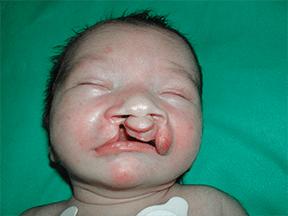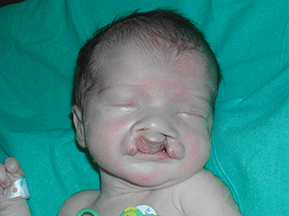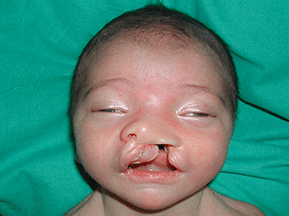The facial buds that will form the lip and the palatal blades that must form the palate did not weld during embryogenesis. The cleft concerns the lip, the palate, and the gum. But the gum is sometimes intact, not split.
The cleft lip may be wide, however this does not prejudge a significant bone deficiency. It is the muscles that have spread the sides. Orofacial clefts may be unilateral (photo 1) or bilateral (photo 2). The nose is sometimes very deformed, especially when the cleft is unilateral, but it can be completely repositioned by the surgery. When the cleft touches the gum, the lateral slit may be absent, or doubled.
The communication between the mouth and nose, linked to the cleft palate, hinders feeding. We insert a palatal plate made of resin to facilitate bottle feeding. The lip and nose are repaired in the first month of life during a single intervention (see Treatment The lip), the palate is closed during a second surgery at the age of 6 months (see Treatment The palate).

Orofacial clefts Bilateral

Orofacial clefts bilateral asymmetric

Orofacial clefts unilateral

Comments